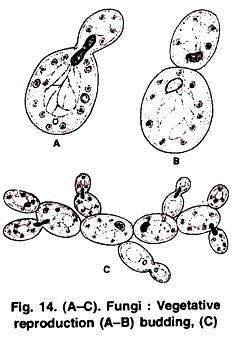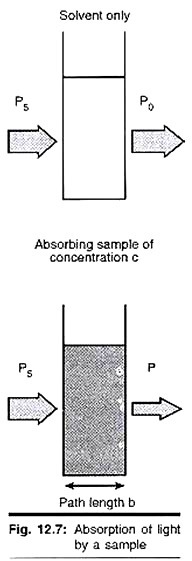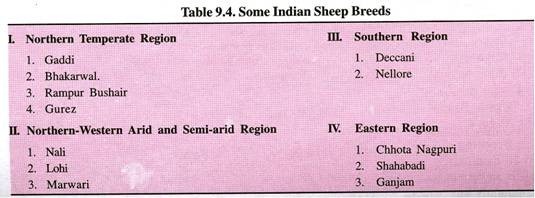The basic concept of molecular biology is to investigate the activities of an organism’s makeup at a sub-cellular level.
The focus is on the sequence of the DNA (the genes), the rate and timing of the expression of those genes, the mechanisms involved in expressing those genes, and the effect that they have on the whole cell and ultimately the whole organism.
Nucleic acids and Proteins are the working entities of molecular mechanisms.
Genes are made of nucleic acids, usually DNA. Some simple genetic systems such as viruses have RNA genes.
DNA is the single most important molecule in living cells and contains all of the information that specifies the cell. There is unidirectional flow of information from the DNA to protein synthesis. This is known as central dogma of molecular biology, first articulated by Francis Crick in 1958. It state that information cannot be transferred back from protein to nucleic acid. In other words, ‘once information gets into protein, it can’t flow back to nucleic acid,
The pathway for the flow of genetic information is:
The arrows indicate the directions for the transfer of genetic information. This is a schematic representation of the mechanism of protein synthesis, which can be substantiated with details of DNA base sequence, complementary RNA sequence, and the corresponding order of amino acids in the protein produced by the more specific mechanism. Genes as linear DNA sequences of bases are said to carry “information” for the production proteins. During protein synthesis, the information is “transcribed” from DNA to messenger RNA and then “translated” from RNA to protein.
Nucleic acid:
Nucleic acids are very long linear macromolecules and they play an important role in protein synthesis. There are two types of nucleic acid: Deoxyribonucleic acid (DNA) and Ribonucleic acid (RNA). DNA contains all information needed for protein synthesis and RNA allows the synthesis to be carried out. DNA and RNA are chain-like molecules composed of subunits called nucleotides.
Each nucleotide has three basic components:
(i) Sugars:
There are two pentose sugars found in the nucleic acids. This is ribose in the case of ribonucleic acid (RNA) and deoxyribose in deoxyribonucleic acid (DNA).
(ii) Nitrogenous bases:
These bases are the purines and pyrimidines. Purines are, adenine (A) and guanine (G), and the pyramidines are cytosine (C), thymine (T) and uracil (U). DNA contains A, G, C and T, whereas RNA contains A, G, C and U. A nitrogenous base with a molecule of deoxyribose or ribose sugar is called a nucleoside.
(iii) Phosphate group:
The phosphate joins the sugars in a DNA or RNA chain through their 5′- and 3′- hydroxyl groups by phosphodiester bonds.
Deoxyribonucleic acid (DNA):
DNA is found in the cells of all living organisms except in plant viruses. In eukaryotic cells, it is confined to the nucleus, where in association with proteins it forms nucleoproteins or the chromatin material. In prokaryotes, DNA lies naked and free in the cytoplasm in the nucleoid region.
Most genes are made of double-stranded DNA arranged in a double helix. One strand is the complementary of the other. The linear sequence of bases in a typical gene carries the information for making a protein. The process of making a gene product is called gene expression.
Molecular structure of DNA:
Based on X-ray diffraction, Watson and Crick in 1953 proposed double helical model ot DNA which explains all chemical, physical and biological properties of DNA. They were awarded Nobel Prize in 1962 for this breakthrough.
The characteristics of DNA:
(i) Each DNA molecule consists of two helical polynucleotide chains or strands.
(ii) The strands run anti-parallel.
(iii) In each polynucleotide chain the phosphate molecules lie on the outer side of deoxyribose and the nitrogenous bases inward, perpendicular to the helical axis.
(iv) The nitrogenous bases of two strands are linked through hydrogen bonds between oxygen and nitrogen atoms of the adjacent bases. Since there is fixed distance between the two strands (11.0 or 10.8), only specific base pairs can fit into the space.
a. A purine (2 ringed) always pairs with a pyrimidine (one ringed)
b. Adenine pairs with thymine and guanine pairs with cytosine.
(v) There are two hydrogen bonds between A = T and three between G = C.
(vi) The two strands are, therefore, complementary.
(vii) In a DNA molecule the two complementary chains are twisted around each other and form a double helix around a common central axis.
(viii) One turn of helix comes to about 34 A and contains 10 nucleotides.
(ix) DNA replication is carried out by a complex group of proteins that unwind the double- stranded DNA helix, and, using DNA polymerase and its associated proteins, copy or replicate the master template itself so the cycle can repeat DNA RNA protein in a new generation of cells or organisms.
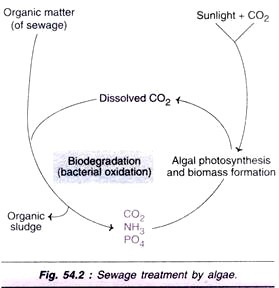 RNA is synthesized in the nucleus but is found chiefly in the nucleolus and cytoplasm. It occurs freely in the cytoplasm as well as in the ribosomes. It helps in protein synthesis but in le plant viruses RNA acts as hereditary material.
RNA is synthesized in the nucleus but is found chiefly in the nucleolus and cytoplasm. It occurs freely in the cytoplasm as well as in the ribosomes. It helps in protein synthesis but in le plant viruses RNA acts as hereditary material.
The characteristics of RNA are as follows:
(i) RNA is a single- stranded structure consisting of a single polynucleotide chain, but it is often folded back on itself forming helices.
(ii) RNA like DNA is formed of several hundreds or thousands of nucleotides arranged in a linear sequence and connected together by 3″-5″ phosphodiester bonds.
(iii) The sugar found in RNA nucleotides is ribose.
(iv) The four nitrogenous bases found in RNA are adenine, cytosine, guanine and uracil. Thymine of DNA is substituted by uracil in RNA.
(v) Intermolecular pairing between the nucleotides of the single strand of RNA provides stability to RNA.
(vi) RNAs are of the three different types performing different functions during protein synthesis.
Messenger RNA (mRNA):
It carries genetic information from chromosomal DNA to the cytoplasm where it acts as template for protein synthesis. It is complementary to DNA and carries the same base sequence as found in that part of DNA from which it is copied, except thymine being substituted by uracil.
Ribosomal RNA (rRNA):
It is found in the ribosomal subunits in the cytoplasms prior to which it is stored in the nucleolus. rRNA is used in the synthesis of ribosomal subunits.
Transfer RNA (tRNA):
It picks up specific amino acid from the cytoplasm, carries it to the site of protein synthesis, and attaches to a specific codon on mRNA during protein synthesis.
Protein Synthesis:
A protein is a polymer consisting of several amino acids (a polypeptide). To form a protein the amino group of one amino acid reacts with carboxyl group of another, the resulting chemical bond is called a peptide bond. Amino acids are joined together in succession to form a linear polypeptide chain.
The process of protein synthesis involves two main steps:
Transcription (DNA to RNA):
Transcription refers to the process in which a single gene located on one of the strands of the double-stranded DNA is copied over into an RNA strand. The RNA strand thus produced is called a messenger RNA or mRNA. The strand that acts as a template for the RNA synthesis varies for different genes along the DNA molecule. The strand on which the gene is located and whose 5′ to 3′ direction correctly reads off the amino acid sequence for the corresponding protein is the non-template strand for RNA synthesis.
During RNA synthesis, an enzyme called RNA polymerase binds to the promoter sequence along the DNA chain and initiates the transcription process. As the RNA polymerase moves along the DNA chain, it unwinds the DNA in front, thus exposing the bases of the two strands; the exposed template strand is used to form base-pairs with RNA nucleotides, one nucleotide at a time, and when the RNA polymerase encounters a stop signal, the DNA as well as the newly synthesized RNA are released.
Translation (RNA to Protein):
Translation is the process in which sequence of nucleotides in mRNA is translated into the sequence of amino acids of a polypeptide chain. It involves formation of peptide bonds between the amino acids and the proteins are synthesized from amino acids as per the message transcribed on mRNA. Protein synthesis occurs in the cytoplasm along the ribosomes. In prokaryotic cells, which have no nuclear compartment, the process of transcription and translation may be linked together. 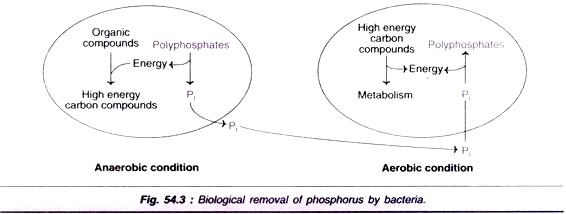 Genetic Code:
Genetic Code:
The term ‘Genetic code’ refers to the set of three-base code words or codon that corresponds to each amino acids and to translation signals. A single base cannot be a codon because there are 20 amino acids and only four bases. Pairs of bases also cannot serve as codons there are only 42=16 possible pairs of four bases. Triplets of bases are possible because there are 43=64 triplets which are more than adequate. The genetic code is a triplet code and all 64 possible codons carry some sort of genetic information. In translating mRNA molecules, the codons do not overlap but are ‘read’ sequentially.
General properties of the code (Fig. 5.2):
(i) Each codon contains three bases and the codon do not overlap.
(ii) Most amino acids have more than one codon. In fact, only methionine and tryptophan have a single codon. Multiple codons corresponding to a single amino acid usually differ only by the third base.
For example, GGU, GGC, GGA and GGG are code for glycine. Thus code is said to be redundant.
(iii) Three codons signal termination of polypeptide synthesis- the stop codons are UAA, UAG and UGA.
(iv) One codon signals initiation of polypeptide syntheses- the start codon AUG, which codes for methionine. All other codons located in a coding sequence act only as an internal codon for methionine.
(v) The code is said to be universal, as the same codon-amino acid relations exist for all organisms- viruses, prokaryotes and eukaryotes.
An exception are the codes of mitochondria, the energy generating organelles of eukaryotes, and chloroplasts, the photosynthetic organelle of the plants, in which there are several deviations. 
